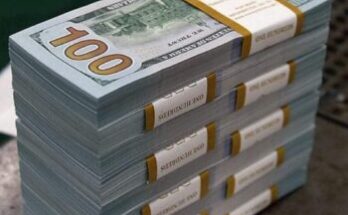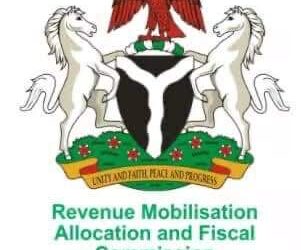Last week, the National Bureau of Statistics (NBS) released its Consumer Price Index report for the month of June and, surprisingly, it showed that inflation rates had dropped. It has got many Nigerians wondering over the correctness or otherwise of the report as prices of goods and services continue to soar; BENJAMIN UMUTEME reports.
For several months, prices of goods and services have been on a steady rise especially with worsening security situation and increasing crude price on one hand and the foreign exchange rate on the other. And in the last two months, the statistics bureau’s CPI report continues to point to a reduction in inflation-which ordinarily should gladden the heart of every Nigerian, however, it continues to pose a source of worry to both financial analysts and the ordinary Nigerian on the street and the reality in the market completely contradicts the report.
For instance, while the NBS told Nigerians that the inflation rate dropped to 17.93 per cent in May and further dropped to 17.75 per cent (year-on-year) in June 2021, the prices of basic foodstuff were on the increase. For example, the price of a loaf of bread which used to sell for N400 moved to N450, the price of a crate of Coca-Cola increased from N1, 800 to N2, 000. Also, a bag of Garri that used to sell for N22, 000 now goes for N25, 000, and a gallon of palm oil which used to be N14, 000 now stands at N20, 000.
The implication is that with the cost of transportation increasing, it has become very difficult to tame the prices of goods and services.
The NBS report
The NBS in its June CPI report stated that the consumer price index (CPI) increased by 17.75 per cent (year-on-year) in June 2021. This is 0.18 percentage points lower than the rate recorded in May 2021 (17.93) per cent. On a month-on-month basis, the headline index increased by 1.06 per cent in June 2021. This is 0.05 percentage points higher than the rate recorded in May 2021 (1.01 per cent).
The percentage change in the average composite CPI for the twelve months period ending June 2021, over the average of the CPI for the previous twelve months period was 15.93 per cent, representing a 0.43 percentage point increase over 15.50 per cent recorded in May 2021.
The urban inflation rate increased by 18.35 per cent (year-on-year) in June 2021 from 18.51 per cent recorded in May 2021, while the rural inflation rate increased by 17.16 per cent in June 2021 from 17.36 per cent in May 2021.
On a month-on-month basis, the urban index rose by 1.09 per cent in June 2021, up by 0.05 points compared to the rate recorded in May 2021 (1.04 percent), while the rural index also rose by 1.02 percent in June 2021, up by 0.04 percentage points over the rate that was recorded in May 2021 (0.98) percent.
Food index
The composite food index rose by 21.83 per cent in June 2021 compared to 22.28 percent in May 2021. (This implies that food prices continued to rise in June 2021 but at a slightly slower speed than it did in May 2021.) This rise in the food index was caused by increases in prices of Bread and cereals, potatoes, yam and other tubers, milk, cheese and eggs, fish, soft drinks, vegetables, oils and fats and meat.
On a month-on-month basis, the food sub-index increased by 1.11 per cent in June 2021, up by 0.06 percent points from 1.05 per cent recorded in May 2021.
The average annual rate of change of the Food sub-index for the twelve-month period ending June 2021 over the previous twelve-month average was 19.72 per cent, 0.54 per cent points from the average annual rate of change recorded in May 2021 (19.18 per cent).
All items less farm produce
The ‘all items less farm produce’ or core inflation, which excludes the prices of volatile agricultural produce stood at 13.09 per cent in June 2021, down by 0.06 per cent when compared with 13.15 per cent recorded in May 2021.
On a month-on-month basis, the core sub-index increased by 0.81 percent in June 2021. This was down by 0.43 percent when compared with 1.24 percent recorded in May 2021.
The highest increases were recorded in prices of garments, passenger travel by air and by road, motor cars and vehicle spare parts, shoes and other footwear, pharmaceutical products, medical services, hairdressing salons and personal grooming establishments, cleaning, repair and hire of clothing, clothing materials, other articles of clothing and clothing accessories, furniture and furnishing and fuels and lubricants for personal transport equipment.
The average 12-month annual rate of change of the index was 11.75 per cent for the twelve-month period ending June 2021; this is 0.25 percent points higher than 11.50 per cent recorded in May 2021.
States: All-item inflation
In June 2021, all items inflation on year on year basis was highest in Kogi (23.78), Bauchi (20.67%) and Jigawa (19.81%), while Cross River (15.53%), Delta (15.18%) and Abuja (15.15%) recorded the slowest rise in headline Year on Year inflation.
However, on a month-on-month basis, June 2021 all items inflation was highest in Kano (2.22%), Akwa Ibom (1.98%) and Osun (1.92%), while Bauchi (0.00%) recorded no change in headline month on month with Abuja and Cross River recording price deflation or negative inflation (general decrease in the general price level of food or a negative food inflation rate).
States: Food inflation
In June 2021, food inflation on a year-on-year basis was highest in Kogi (30.34%), Enugu (25.18%) and Kwara (24.78%), while Bauchi (18.97%), River (18.92%) and Abuja (17.09%) recorded the slowest rise in year on year inflation. But on a month-on-month basis, June 2021 food inflation was highest in Jigawa (2.67%), Edo (2.43) and Cross River (2.16%), while Lagos (0.14%), Borno (0.06%) and Kwara (0.02% recorded the slowest rise in food inflation.
The big question mark
Many continue to question the methodology the NBS used in arriving at the report. They argue that while inflation may have dropped marginally, the indices cannot be overlooked.
Speaking with Blueprint Weekend, the president of the Association of Capital Market Academics of Nigeria (ACMAN), Prof. Uche Uwaleke, noted that with the risk of inflation outlook still present, it will be difficult to infer that the downward fall in rates is an indication that inflation is dropping.
He said: “On the recently released inflation report for June by the NBS, it is difficult to interpret this marginal drop in headline inflation since April this year to mean a sustainable downward trend in inflation rate. This is because the risks to inflation outlook are still present. These include insecurity which directly impacts food inflation, the recent devaluation of the naira and the likely hike in pump price of fuel and electricity tariffs.
“It is also possible the marginal drop in food inflation to 21.83% in June may not reflect actual drop in basic food prices but arising from the ‘base effect’ associated with the methodology of computing CPI on a year-on-year basis.
“To appreciate the practical reality, one needs to consider price changes based on a month-on-month. According to NBS, Headline inflation increased by 1.06% in June from 1.01% recorded in May month-on-month.
“It is pertinent to note that Inflationary pressure is coming more from the food component at over 20% reflecting legacy factors such as inadequate supply and transport challenges. This partly explains why food inflation is highest in Kogi and lowest in neighbouring FCT.”
Last line
On the way forward, the ACMAN boss suggested that, “Given that inflationary pressure has to do more with supply, I suggest the government and the CBN should scale up interventions in Agriculture with adequate monitoring and evaluation mechanisms put in place.
“The CBN should equally continue to ensure forex market liquidity to reduce exchange rate especially now that crude oil prices are relatively high. In order to increase food output, the need to tackle the seemingly intractable security challenge facing the country cannot be over-emphasised.”




